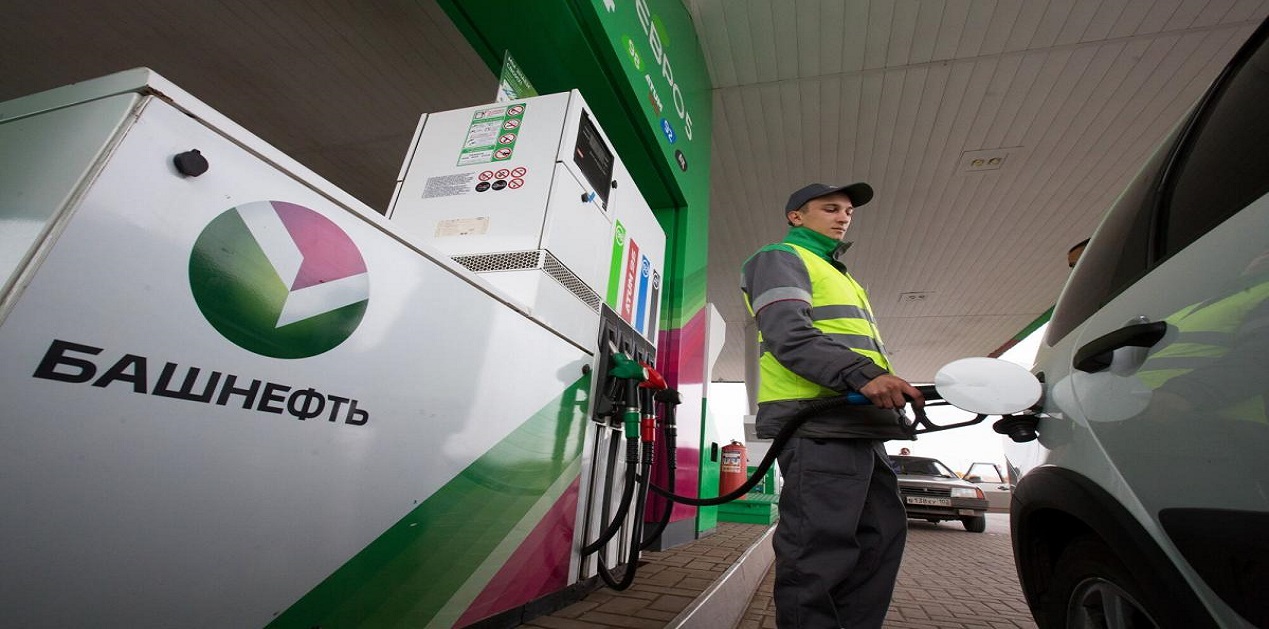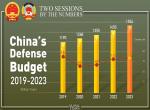Background
On September 21, by a decree signed by Prime Minister Mikhail Mishustin, Russia banned the export of all types of diesel, including summer, winter and Arctic blends, as well as heavy distillates, including gasoline and diesel.[1] As per the Russian Energy Ministry, the growing domestic diesel shortages were disturbing Russia’s crucial seed-planting in the agricultural sector, thus impacting a large number of farmers along with disruption in the retail sector.[2] However, the ban excluded four former Soviet states: Belarus, Kazakhstan, Armenia and Kyrgyzstan, all members of the Eurasian Economic Union.[3]
Although the ban was eased within a few weeks, the sudden announcement led to a frantic reaction across the world. Now that Russia has decided to do away with the ban entirely, it is time to contemplate some essential questions, particularly what were the main reasons (political or economic) that prompted the Russian government to issue the ban on oil to various countries, whether Russia tried to weaponise its oil supplies in retaliation to Western sanctions, especially in view of the looming winter season in Europe and how would it impact other countries across the world.
What Prompted Russia to Ban Fuel Export?
Due to the ruble’s devaluation and the reduction in the discount applicable to Urals crude relative to the global crude market, it became more profitable for the exporters to export instead of consuming domestically.[4] In recent months, Russia has seen domestic prices of diesel and gasoline soar and a severe deficit of petrol products in some regions. Retail gasoline and diesel prices in Russia have climbed 9.4% from the start of the year.[5] This surge in fuel prices causing inflation is a potential political headache as the Kremlin prepares for the presidential election in March.[6]
Now, the ban has lowered the spot prices of gasoline and diesel on the St. Petersburg exchange by 16% and 21%, respectively.[7] Prices at tank farms across the country also came down on average by around 8%, representing 6,300 ruble/mt ($62.1/mt), demonstrating the ban’s effectiveness. The restrictions likely helped control the prices as the domestic fuel market saturated. As per Deputy Prime Minister Alexander Novak, by October 4, Russian inventories had stored an additional 430,000 metric tons.[8]
The Practicality of the Ban
The export ban to cater to the domestic market is confusing as Russia’s domestic demand for diesel is much less than it already produces. Officially, the nation expects to produce over 90 million tons of the fuel this year, while its domestic demand for consumption is just 40 million tons, leaving the rest for exports.[9] Indeed, Russia’s war in Ukraine may have created some additional demand for its military units and consumers in the annexed territories in Ukraine’s eastern region. The region does not have any operating refineries. Although details of the supplies are classified, the amount needed for military needs in six Russian regions bordering Ukraine and the annexed Donetsk and Luhansk regions reached about 220,000 tons in September 2022.[10]
Nevertheless, even with the military requirements, Russia’s diesel production may far exceed the domestic requirements, putting pressure on the nation’s storage reservoirs. Russia does not disclose the exact quantity of dieselit can hold in its ports, refinery facilities and reservoirs near trunk pipelines.[11] Curtailing all exports would result in domestic supplies building up fast. But, there is little sign that that amount of extra fuel would be needed for long, and there is limited room to store an excess.
Easing of Export Regulation
Within a week of imposing the ban, Russia eased some restrictions. Under this new regulation, Russia is allowing the export of bunkering fuel for some vessels and diesel with high sulphur content.[12] Further, on October 6, Russia partially lifted the ban, allowing diesel exports only for those exporting via pipeline.[13] Other modes of export are still restricted. However, exports via pipeline to Russia’s western ports, Primorsk and Novorossiisk, account for the majority of Russian diesel exports; almost three-quarters of Russia’s 35 million tonnes of export volume use pipelines.[14] Therefore, even the partial removal of the ban is good news for those Western countries that import Russian oil.
However, the ban on gasoline and diesel exports by rail and road remains. In addition, exporters that export diesel purchased from the domestic market without producing their own diesel will have to shell out an exorbitantly high export duty of 50,000 ruble/mt (almost $500). And this duty would apply to all oil products, not just gasoline and diesel. In other words, any oil product exporter not involved in the production process will pay this prohibitively high duty. The duty is expected to deter the bulk of exports to the grey market. This would also prevent exports of products earmarked for domestic consumption. Refineries witha capacity of 1 million mt /year (20,000 barrels/day) or more are exempt from this duty.[15]
Undoubtedly, Russian refiners earn much more from exporting diesel than they do from supplying the domestic market. Further, the high international prices have provided these exporters an additional incentive. Given the above, the government has repeatedly experimented with different measures to ensure domestic demands are met. Perhaps this harsh ban demonstrated to the industry that it needs to be more receptive to the government’s calls. As a matter of fact, to support these refiners, the government reinstated its subsidies or damper mechanism so that refineries get compensation for the difference between prices at home and abroad, costing the state budget 400 billion roubles ($4.3 billion) in subsidies.[16]
The updated regulations are set to free up about 90% of pre-ban seaborne volumes for export, or some 630,000 barrels a day.[17] However, in this current setup, exporters must supply at least 50% of their production to the domestic market as a condition of receiving export permits. In other words, the amount of export permits for any company will not exceed their monthly average of pipeline diesel exports for the past eight months.[18] According to Pavel Sorokin, Deputy Energy Minister of Russia, the price hikes at different retail stations had eased but needed to fall further, and the export restriction would be fully lifted only when the domestic market was fully supplied.
Implications for Africa and Beyond
Russia occupies a prominent place in the global diesel market. Up to September 2023, Russia was the world’s single largest seaborne exporter of diesel-type fuel, narrowly ahead of the US. It shipped an average of 1.07 million barrels per day (bpd) of diesel from the start of the year to September 25, accounting for more than 13.1% of total seaborne diesel trade.[19] In comparison, Russia is a much less significant gasoline exporter, shipping an average 110,000 bpd from January 1 to September 25.[20] Turkey, Brazil and Saudi Arabia are the most significant importers of Russian oil.
On the face of it, the ban would not significantly impact the Western nations that lined up to support Ukraine since the Russia-Ukraine war that started in February 2022. These traditional buyers of Europe stopped buying from Russia following the attack. That had pushed the trade elsewhere, with Turkey, Brazil and Saudi Arabia emerging as key destinations.[21] However, oil markets are global, and the loss of such a large supply source for this prolonged period is almost unprecedented. In fact, as the metastasising war with Ukraine continues to drag on without any end in sight, Russia could not afford to withhold the exports for too long, either. As predicted, Russia lifted the ban within two weeks, albeit partially.
The sanctions by several Western countries have forced Russia to redirect significant oil export volumes to alternative markets, including Africa. India, China, and Turkey are also becoming increasingly important export markets. Sanction-hit Russia’s refined product exports to Africa have skyrocketed since the invasion of Ukraine, increasing 14-fold in just over a year. Before the war, Russia exported 33,000 b/d of refined products to Africa, mostly gasoline. By March 2023, that had soared to 420,000 b/d.[22] Most of these shipments were destinedfor Nigeria, Tunisia, and Libya.[23]
Pre-war, Morocco did not export gasoline, gasoil, or naphtha, but in 2023 it supplied relatively large quantities to Europe. In June, the North African country shipped 61,400 b/d to Spain.[24] As their own refined products exports increase, this has fuelled accusations that Morocco has been re-exporting Russian products to Europe. Likewise, China’s State refiners, Sinopec and Petrofac,as well as privately owned refineries, have massively increased their imports of Russian crude and are selling the refined products to customers in the US and EU as well.[25]
Going forward, African states are expected to turn to supplies of gasoline and diesel shipped from the Middle East, India and Turkey. At least 132,000 tons of September-loading diesel will be heading to Africa from Oman’s new Duqm refinery.[26] Latin American importers will likely turn to the US Gulf Coast and the Middle East.[27] Europe could also fill some of the gap from Africa.
Way Forward
On September 21, Russia banned the export of gasoline and diesel to boost domestic supply and keep retail prices under check during the upcoming winter season. Further, Russia took steps to prevent private players from manipulating market conditions. Russia eased some restrictions, allowing the export of bunkering fuel for some vessels and diesel with high sulphur content. Although the complete lifting of the ban is on the cards, the government has yet to give a timeline for further easing of restrictions.
Proponents of banning the export of crude oil contend that doing so will boost domestic crude supplies, enable refiners to produce more gasoline and diesel, and ultimately drive down the cost of these fuels. The implication is that there is sufficient excess capacity to refine them all at home. However, given its storage capacity constraints and stagnant economy due to sanctions, the benefits for Russia of eliminating the export ban far exceed the costs. It was predicted that the ban would be lifted sooner than later.
While Russia said that these measures are temporary and are regularly reviewed to allow necessary adjustments based on domestic demand and supply situations, a group of Western countries has raised concernsregarding this fuel export ban as this will have a considerable impact on their transportation, heating and industrial processes, prompting some experts to term it as weaponisation of its resources. With the northern hemisphere winter approaching and global diesel markets already tight,the ban is the latest blow to the global fuel market, posing higher global prices and heightened energy and food insecurity risks.While the partial lifting of the ban released some pressure, the ban may serve as a wake-up call for oil-importing countries to take pre-emptive action and arrange alternative supplies. Finally, the export ban may reduce some of the complacency that had crept into the market about a Russian disruption threat.
References
[1] “Russia temporarily bans export of petrol and diesel to stabilise domestic market”. The Guardian. September 21, 2023. https://www.theguardian.com/world/2023/sep/21/russia-temporarily-bans-export-of-petrol-and-diesel-to-stabilise-domestic-market
[2] “Russia Suspends Fuel Exports Amid Shortages”. RFERL.September 21, 2023. https://www.rferl.org/a/russia-suspends-fuel-exports-shortages-harvest/32603251.html
[3] Sam Meredith. “Russia’s indefinite ban on diesel exports threatens to aggravate a global shortage”. CNBC. September 22, 2023. https://www.cnbc.com/2023/09/22/russias-indefinite-ban-on-fuel-exports-could-worsen-a-global-shortage.html
[4] “Kremlin’s Latest Battle Is with Russia’s Oil Companies”. Live Mint. September 26, 2023. https://www.livemint.com/economy/kremlins-latest-battle-is-with-russia-s-oil-companies-11695749573030.html
[5] “Russia Temporarily Bans Diesel Exports; European Prices Jump”. Supply Chain Brain. September 22, 2023. https://www.supplychainbrain.com/articles/38143-russia-temporarily-bans-diesel-exports-european-prices-jump
[6] “Russia Wrangles with Oil Companies Over Fuel Costs”. Bloomberg. September 21, 2023. https://www.bloomberg.com/news/articles/2023-09-21/russia-oil-companies-wrangle-over-fuel-costs-as-war-drags-on
[7] “Russia outlines controls on diesel exports after ban lifted, price pressures ease”. S &P Global Commodity Insights. October 9, 2023. https://www.spglobal.com/commodityinsights/en/market-insights/latest-news/oil/100923-russia-outlines-controls-on-diesel-exports-after-ban-lifted-price-pressures-ease
[8] “Explained | How serious is Russia's fuel export ban and who will be hit?” Deccan Herald. October 4, 2023. https://www.deccanherald.com/world/explained-how-serious-is-russias-fuel-export-ban-and-who-will-be-hit-2-2712593
[9] Julian Lee.“Russia’s Diesel Exports Ban Is Risky for Moscow and World Alike”. Bloomberg.https://www.bloomberg.com/news/articles/2023-09-22/russia-s-diesel-exports-ban-is-risky-for-moscow-and-world-alike
[10] Brian Evans. “Russian fuel shipments to troops fighting in the Ukraine war have jumped to the highest level since the invasion began.”. October 12, 2023. https://finance.yahoo.com/news/russian-fuel-shipments-troops-fighting-170154531.html
[11] Julian Lee.“Russia’s Diesel Exports Ban Is Risky for Moscow and World Alike”. Bloomberg.https://www.bloomberg.com/news/articles/2023-09-22/russia-s-diesel-exports-ban-is-risky-for-moscow-and-world-alike
[12] “Explained | How serious is Russia's fuel export ban and who will be hit?” Deccan Herald. October 4, 2023. https://www.deccanherald.com/world/explained-how-serious-is-russias-fuel-export-ban-and-who-will-be-hit-2-2712593
[13] “Russian fuel export ban to be lifted next week”. TB News. November 9, 2023. https://www.tbsnews.net/world/russian-fuel-export-ban-be-lifted-next-week-736606
[14]Robert Perkins and Elza Turner. “Russia eases diesel export ban, restores refiner's subsidy as storage fills”. S &P Global Commodity Insights. October 6, 2023. https://www.spglobal.com/commodityinsights/en/market-insights/latest-news/oil/100623-russia-eases-diesel-export-ban-restores-refiners-subsidy-as-storage-fills
[15]Nick Coleman and Elza Turner. “Russia outlines controls on diesel exports after ban lifted, price pressures ease”. S &P Global Commodity Insights. October 9, 2023. https://www.spglobal.com/commodityinsights/en/market-insights/latest-news/oil/100923-russia-outlines-controls-on-diesel-exports-after-ban-lifted-price-pressures-ease
[16] “Russia to lose $4 bln tax take as it reverses cut in refining subsidy”. Reuters. November 1, 2023. https://www.reuters.com/markets/russia-lose-4-bln-tax-take-it-reverses-cut-refining-subsidy-2023-11-01/
[17] “Russia Lifts Diesel-Export Ban That Battered Global Markets”.Bloomberg. October 6, 2023. https://www.bloomberg.com/news/articles/2023-10-06/russia-lifts-diesel-export-ban-for-its-oil-producers
[18]Ibid
[19] “Russia lifts diesel export ban; what happens next?” The Daily Star. October 8, 2023. https://www.thedailystar.net/business/economy/news/russia-lifts-diesel-export-ban-what-happens-next-3438126
[20]Natalia Chumakova, Ahmad Ghaddar and Trixie Yap “Russia opens taps on diesel exports amid supply fears”.Business Day. October 8, 2023. https://www.businesslive.co.za/bd/world/europe/2023-10-08-russia-opens-taps-on-diesel-exports-amid-supply-fears/
[21]Julian Lee.“Russia’s Diesel Exports Ban Is Risky for Moscow and World Alike”. Bloomberg. September 22, 2023. https://www.bloomberg.com/news/articles/2023-09-22/russia-s-diesel-exports-ban-is-risky-for-moscow-and-world-alike
[22]Rosemary Griffin and Charlie Mitchell. “Russia reshaping Africa energy links after Ukraine invasion”. S &P Global Commodity Insights.July 27, 2023.
https://www.spglobal.com/commodityinsights/en/market-insights/latest-news/oil/072623-russia-reshaping-africa-energy-links-after-ukraine-invasion#:~:text=Refined%20products%20exports,Africa%2C%20much%20of%20it%20gasoline.
[23]Mohi Narayan. “Russia boosts Q1 gasoline exports, finds buyers in Africa to replace Europeans”. Reuters. April 13, 2023. https://www.reuters.com/business/energy/russia-boosts-q1-gasoline-exports-finds-buyers-africa-replace-europeans-2023-04-13/
[24] “Russian oil product flows to africa jump following western sanctions.”S &P Global Commodity Insights. July 4, 2023. https://www.spglobal.com/commodityinsights/en/market-insights/latest-news/oil/070423-russian-oil-product-flows-to-africa-jump-following-western-sanctions
[25]Florence Jones. “Major Chinese refineries crowd out smaller independents in competition for Russian oil”. Offshore Technology. April 21, 2023.https://www.offshore-technology.com/news/major-chinese-refiners-crown-out-smaller-independents/
[26] “Explained | How serious is Russia's fuel export ban and who will be hit?” Deccan Herald. October 4, 2023. https://www.deccanherald.com/world/explained-how-serious-is-russias-fuel-export-ban-and-who-will-be-hit-2-2712593
[27]Ibid
(The paper is the author’s individual scholastic articulation. The author certifies that the article/paper is original in content, unpublished and it has not been submitted for publication/web upload elsewhere, and that the facts and figures quoted are duly referenced, as needed, and are believed to be correct). (The paper does not necessarily represent the organisational stance... More >>
Image Link: https://news.yahoo.com/russia-temporarily-limits-diesel-gasoline-113436941.html










Post new comment